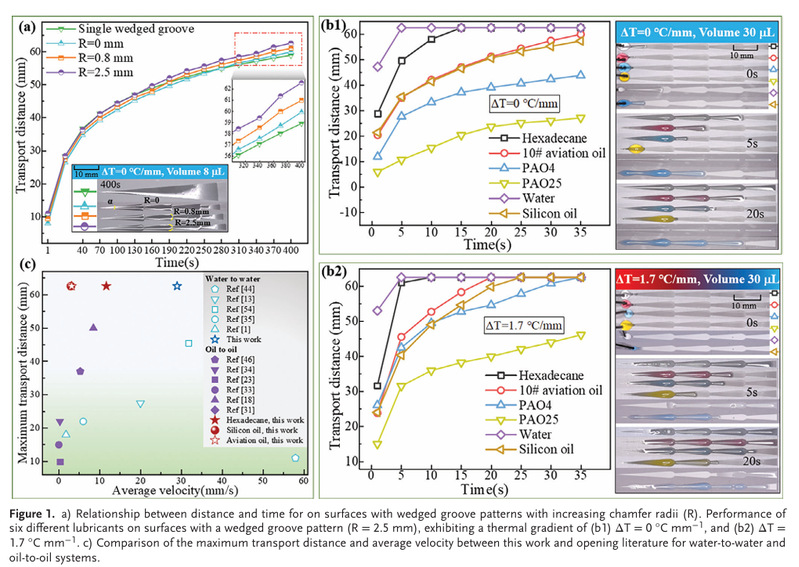| Regulation of Liquid Self-Transport Through Architectural-Thermal Coupling:Transitioning From Free Surfaces to Open Channels |
| Qingwen Dai, Chengxuan Du, Wei Huang, and Xiaolei Wang (2025) |
| 发布人:戴庆文 发布时间:2024-02-20 浏览次数:698 |
In this work, the regulation of liquid self-transport is achieved through architectural and thermal coupling, transitioning from free surfaces to open channels. Hierarchical structures inspired by the skin of a Texas horned lizard are designed, with the primary structure of wedged grooves and the secondary structure of capillary crura. This design enables advantages including long-distance self-transport, liquid storage and active reflux management on free surfaces, directional transportation, synthesis and detection of reagents in confined spaces, as well as controllable motion and enhanced heat dissipation in open channels. The regulation capacity can be precisely controlled by adjusting the secondary capillary crura and external thermal gradients. The regulation mechanism is further elucidated through microscopic flow observation and a deduced theoretical model. The proposed structures are expected to introduce a new concept for designing lubrication systems, microfluidic chips, methods for chemical synthesis, and heat transfer in the future.
全文下载: |
